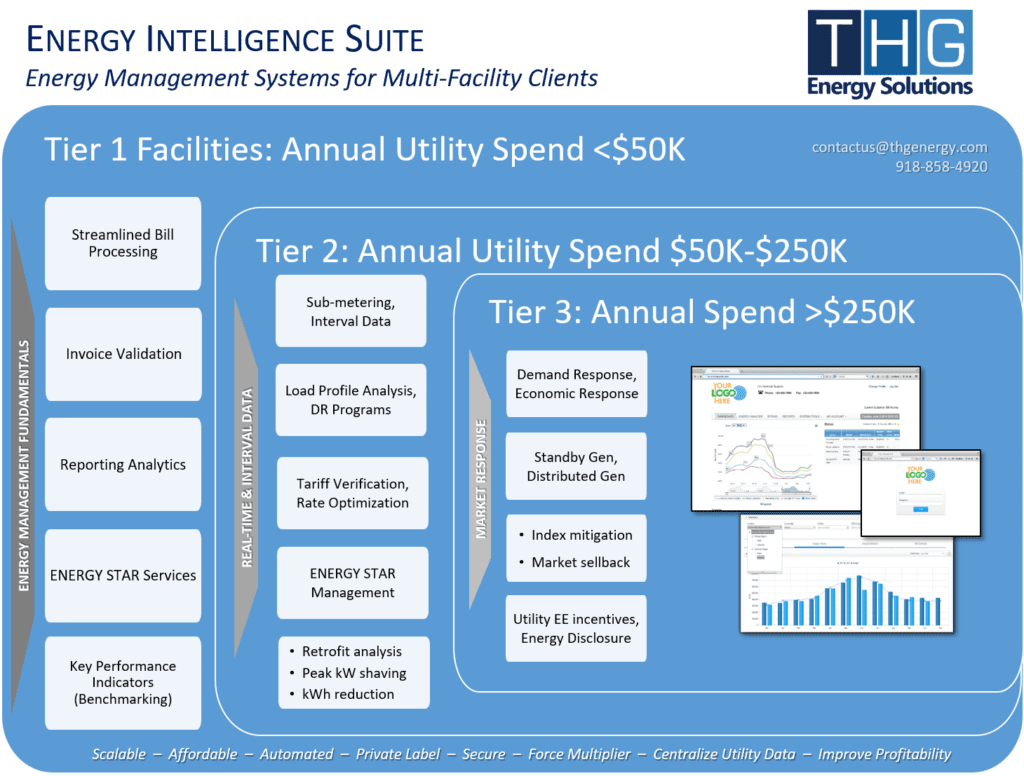Balancing Cost-Effective Data with Savings Opportunities
For energy and sustainability managers in buildings and facilities, it’s a brave new world. Beyond basic efficiency measures, the old paradigm treated energy costs as a non-controllable utility cost. The new reality is full of alternatives and requires more data and active management. This includes renewable energy strategies from wind and solar projects, distributed energy solutions from solar and batteries, new lighting systems, smart thermostats, EV infrastructure, and IoT. In many cases, these alternatives require new enterprise strategies for real-time energy monitoring and automated demand management. 2019 is a very good time to get organized, informed, and ready for new options.
While ignoring these new energy realities can be hazardous, it’s also easy to spend too much time and money on systems and solutions. Some proprietary platforms don’t provide accessible and useful data, accommodate third-party access, or support third-party devices or equipment. Traditional DIY solutions for manual data entry and internal systems have exceeded the ability for entities to effectively manage. As a rule of thumb, spending more than two percent (2%) (as an upper limit) of annual energy spend on data acquisition and management can be hazardous to cost-effective energy management and sustainability. How many companies will tell you this?
THG’s mission is to provide our clients with the most cost-effective Energy Intelligence solutions using existing equipment and technologies, leveraging utility smart meters, and streamlining data access from a wide variety of sources and third parties. Effective enterprise data platforms must be able to accommodate and capture multi-sourced utility data (detailed cost, usage, and demand components), smart meter and interval data recorders (IDR), sub-meters, IoT and Building Automation. With more than 15 years of experience, THG’s platform also supports real-time market prices and grid events, integrated weather analytics, ENERGY STAR, and other sustainability reporting.
Automated demand management presents one of the biggest and most underutilized savings opportunities for commercial clients. You can now accomplish this without adversely impacting operations. That’s why THG has focused on Automated Demand Response capabilities. Services include project consulting, real-time automated load response, text, and email monitoring and notifications, and detailed market integration and participation for most North American RTO/ISO programs. Even if all these tools aren’t deployed, the capabilities and expertise in these technologies and integrations help ensure clients have the ability to use and expand the Energy Intelligence Suite for all current and future needs and requirements.
What are some guidelines for determining the level of investment and resources in securing interval data and real-time data and demand management? We’ve developed a simple matrix to help clients organize this effort. Of course, market and utility programs and incentives vary widely, along with facility operations and capabilities.

THG’s team includes engineers, market analysts, and data experts to help clients get to the right answer for them. We would welcome an opportunity to discuss your specific facilities, questions, and situations. Let us help you make 2019 the year to get organized and ready for a new energy paradigm.
–Dan Frey, President
